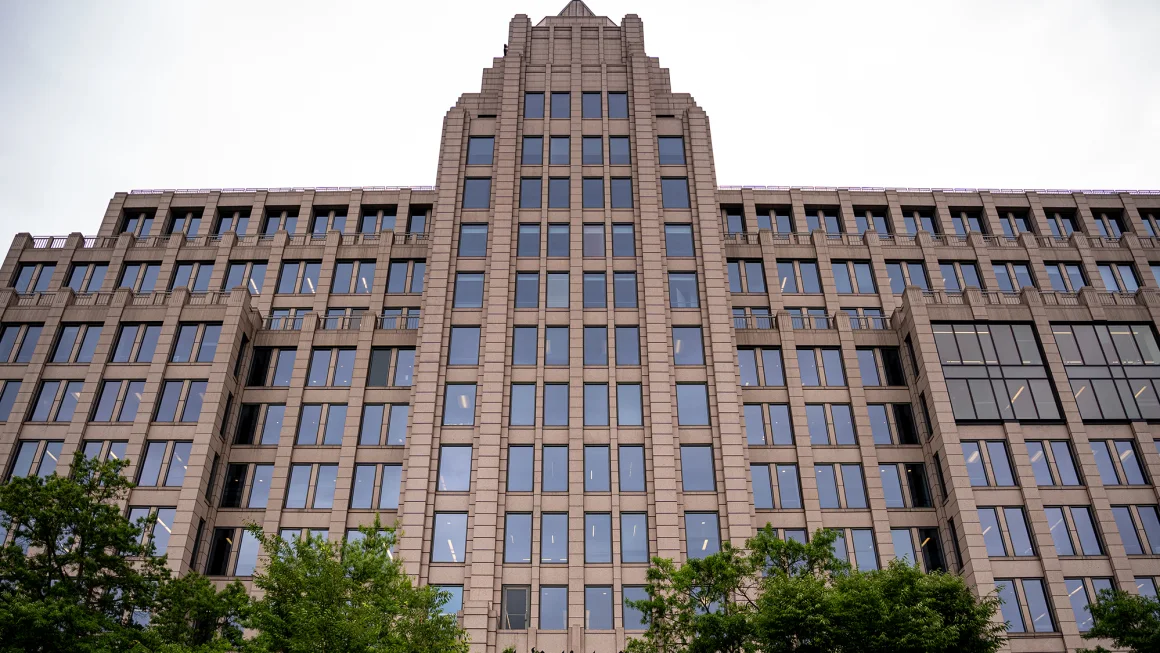As a seasoned senior vice president at a global tech firm, Sharon wasn’t expecting to feel emotional while listening to a keynote. But as former U.S. Surgeon General Dr. Vivek Murthy spoke, describing how loneliness has become a public health crisis, something clicked. “It wasn’t that the information was new,” she told us. “It was that I suddenly saw the evidence everywhere—in my team, in our culture, even in myself.”
She started describing what had been quietly gnawing at her: fewer spontaneous chats, quieter Slack channels, new hires struggling to find their footing, virtual meetings where people kept their cameras off and barely interacted. One line from a recent culture survey stuck with her: “I actually look forward to IT check-ins because it’s the only time someone asks how I’m doing. That’s supposed to be the most boring meeting of the month, and it’s the one place I feel like a person.”
That line hit a nerve. And it’s not just Sharon. Across industries, we’ve heard that leaders are noticing the same thing: “People are quieter.” “Collaboration feels more transactional.” “New employees aren’t taking initiative.” These shifts are easy to dismiss as cultural friction or post-pandemic fatigue, but they point to something deeper.
If loneliness is reshaping society, then it’s already reshaping the teams we lead, whether we see it clearly or not. Loneliness silently dismantles trust and team cohesion, foundational elements that drive performance, innovation, and resilience. By attending to connection as a strategic responsibility, leaders have an opportunity to unlock a huge strategic advantage—and become architects of healthier, more human workplaces.
How Modern Work Inherits a Crisis of Disconnection
The data is clear: Loneliness is rising, driven by broad societal and technological shifts. A hallway chat or post-meeting walk once offered easy connection, but hybrid and remote work have stripped those moments away. These ostensibly low-stakes interactions—once the connective tissue of life—don’t translate easily to digital platforms.
On top of this, meaningful interaction is being displaced by shallow, technology-mediated exchange, making the problem more acute. Someone might “react” to dozens of messages and still feel profoundly isolated. Algorithm-driven platforms like LinkedIn inflate expectations of how socially connected, accomplished, or fulfilled we should feel. The growing gap between perceived and lived connection creates a kind of emotional dissonance—one that makes people less willing to share authentically, reinforcing the very isolation they’re experiencing.
These societal dynamics inevitably shape the workplace. They seep into team culture, performance expectations, and everyday interactions. Work doesn’t exist apart from society—it absorbs its pressures, amplifies its gaps, and remains one of the last places where people hope to feel like they matter.
The Silent Threat to Team Performance
Loneliness has been linked to increased burnout, declining productivity, and rising attrition—costing U.S. companies up to $154 billion a year. Beyond measurable financial impact, leaders sense something has shifted but struggle to name it. After all, goals are still being met, people are still showing up to meetings, and Slack channels are in use. Yet the energy feels lower, collaboration more transactional, and initiative harder to sustain.
Creating a less-lonely workplace starts with recognizing that loneliness isn’t just a personal issue—it’s an invisible systemic force quietly eroding trust, creativity, and performance, driven by a broader breakdown of connection.
If leaders don’t take early action, the negative effects of loneliness compound. What begins as quiet withdrawal can quickly become deep misalignment and eventually loss of productivity. The solution is not more tools or team-building interventions; it’s intentionally embedding connection into how people work together.
Creating Connected Workplaces in an Era of Loneliness
Traditional organizational thinking treats teams as closed ecosystems insulated from societal pressures. But loneliness defies those boundaries—it’s been surfaced as a systemic issue with organizational consequences. Constance Noonan Hadley and Sarah L. Wright’s recent research highlights how employers often misdiagnose the problem, focusing on personality traits or remote work rather than addressing the structural and cultural drivers of disconnection.
Building on their insights, we argue that effectively managing teams in an era of loneliness requires leaders to focus on two distinct but deeply interconnected layers of connection:
- Social cohesion and belonging: This is the connective tissue of teams, encompassing shared identity, community rituals, and practices of inclusion. It creates psychological safety, reduces friction, and generates a sense of collective purpose and energy. Social cohesion isn’t about uniformity but about ensuring people feel like they’re seen and their contributions are valued.
- Meaningful interpersonal relationships: These deeper, trust-based connections transcend work tasks. When team members genuinely know and trust each other, they communicate better, solve problems faster, and are more likely to innovate together, thus making deep relationships key in combating loneliness and increasing productivity.
Connection needs to be embedded in how work happens, not added on top of an already overwhelmed schedule. Leaders need a repeatable system to embed connection into the fabric of their work.
We’ve identified five leadership practices that combat loneliness by helping team members feel seen, supported, and aligned. They’re based on research on psychological safety, social capital, team cohesion, and learning culture, as well as our own experience in leading and coaching teams. Each practice is meant to be embedded directly into the rhythms, rituals, and structures of day-to-day work, fostering belonging, trust, speed, resilience, and cohesion.
1. Build team cohesion through shared identity.
Loneliness in teams often stems from a lack of shared identity and belonging. When individuals feel disconnected from their colleagues or the broader purpose of their work, isolation can quietly take root, even in high-performing environments.
By intentionally cultivating shared identity and belonging, leaders can actively reduce feelings of isolation and help team members feel connected to something larger than themselves. This sense of connection taps into the basic human need for social affiliation, making people more likely to persist in challenging tasks and to support one another through adversity. In turn, belonging increases discretionary effort and trust: When teams feel like they’re part of something meaningful, they don’t just comply—they commit, and the risk of workplace loneliness is diminished.
Try this: Create and share team narratives—such as moments of grit, missteps, or breakthroughs—at key moments: onboarding, all-hands, launches, or celebrations. Shared stories help people make meaning together and reinforce team identity. Create simple rituals like “Wins & Fails Fridays” that normalize reflection and learning together. And explain the reasoning behind decisions—transparency strengthens trust and reinforces a shared sense of direction.
2. Design collaboration to build trust.
Social capital—formed through repeated, trust-based interactions—is a powerful antidote to workplace loneliness. When work becomes overly transactional or individualized, people lose the relational context that helps them feel seen, supported, and resilient.
When leaders treat relationship-building as an operational requirement, not just a bonus activity, they create intentional pathways for connection that foster deeper trust and faster coordination. In relationship-rich environments, team members are less likely to feel isolated; instead, they buffer stress together, communicate more openly, and unlock greater creativity and innovation.
Try this: Pair new hires with onboarding buddies to provide early context and personal connection. Buddy systems like these have been shown to accelerate integration and boost engagement.
You can also build short “connection sprints” into project kickoffs by taking time for intentional introductions, personal context, and shared goals before diving into deliverables. Research shows that framing collaboration around structured, purpose-driven interactions—much like agile or scrum “sprints”—strengthens team ties and information exchange, a key component of social capital and innovation. Rotate project teams with intention, using collaboration as a tool for cross-functional trust, not just efficiency.
3. Model Humanity to Build Resilient Teams
Psychological safety—the belief that it’s safe to admit challenges or express vulnerability—is essential for combating loneliness at work. Leaders who make space for authentic emotional check-ins, without pathologizing them, send a powerful signal that it’s safe to connect on a human level. When leaders model openness appropriately, it gives others permission to do the same, supporting mental health, reducing isolation, and strengthening relationships.
Try this: Start team meetings with a quick red/yellow/green check-in to give team members a fast, low-pressure way to share how they’re doing and create a shared emotional backdrop for the work ahead. Brief emotional check-ins like this help foster psychological safety and team connection—key ingredients of high-performing teams, as seen in Google’s Project Aristotle.
In 1:1s, ask, “What’s giving you energy right now? What’s draining it?” Simple check-ins like these can increase shared awareness and psychological safety, which studies have shown support employee resilience. Occasionally, share a recent challenge to demonstrate that struggle is part of leadership, not a failure of it. These small signals—at both the team and individual level—help build trust and reduce isolation over time.
4. Operationalize belonging through systems and rituals.
Scalable connection requires infrastructure—not just intention—especially in distributed or hybrid environments where disconnection can spread faster than trust. When connection is reinforced systemically, it moves from being a leadership aspiration to an organizational habit, making it much harder for loneliness to take root and persist within teams.
Cultural norms and behaviors are shaped by what systems reward; if belonging and connection aren’t reflected in performance reviews, onboarding, or recognition, they risk becoming neglected or unevenly deployed. But when connection is built into systems and rituals, teams are more likely to feel seen and supported, reducing the risk of isolation and fostering a resilient, inclusive culture.
Try this: At day 30, ask a new hire, “Have there been any moments where you started to feel like a real part of the team—or are you still finding your footing?” Follow up with “What helped?” or “What do you wish had happened differently?” Stay interviews like these can surface blockers early and strengthen inclusion, especially when revisited at 90 and 180 days.
Hold quarterly “culture calibrations” where teams reflect on what’s working and what’s drifting, an approach recommended by organizational researchers who note that culture sticks only when regularly reviewed against behaviors and outcomes.
5. Set the tone by acknowledging your own need for connection.
Loneliness at the top is real—and it can be contagious. The higher up someone goes, the fewer peers they have, and the more pressure they feel to appear composed, decisive, and unaffected. But unaddressed isolation at the top often cascades downward. Teams are more likely to reconnect when leaders go first, naming disconnection, building peer support, and showing that vulnerability is safe.
Leaders who acknowledge and address their own need for connection are more likely to create environments where others feel safe to do the same.
Try this: Build a trusted group of peer advisors or coaches outside your team. Leaders with external support report greater resilience and decision quality. Audit your calendar: How much time is spent on transactional updates versus relationship-building? In your next executive team meeting, consider sharing one moment where you felt particularly connected—or disconnected—from the work. Vulnerability like this, when modeled from the top, can unlock deeper trust across the team.
. . .
Loneliness presents both an urgent challenge and an unprecedented opportunity. For leaders, this moment offers a chance to lead differently.
Leaders make countless small choices every day—about how meetings are run, how information flows, and how success is defined. Each of these choices influences whether people feel seen, supported, and part of something meaningful. In an increasingly isolated world, organizations that embed connection into the fabric of how work gets done won’t just build more human cultures—they’ll gain a strategic edge in the form of stronger retention, greater resilience, deeper trust, and the kind of innovation that only emerges when people feel seen, safe, and valued enough to contribute fully.
Connection isn’t soft—it’s critical infrastructure. And building it may be the most important leadership challenge of our time.
Source- https://hbr.org/2025/09/loneliness-is-reshaping-your-workplace




















